On behalf of Mr Jihad Dib: I move:
That this bill be now read a second time.
I am pleased to introduce the Energy Amendment (Long Duration Storage and Investment) Bill 2024. This Government is committed to ensuring the New South Wales electricity system continues its important transition to renewable energy. Critical to that is the delivery of more long-duration storage. Over the next 10 years three of the four remaining coal-fired power stations in New South Wales are expected to retire as we move towards a net zero future. We do not want coal-fired power stations to be open any longer than needed and we are working hard to replace them through a mix of wind and solar generation. As so many people like to point out, the wind does not always blow and the sun does not always shine. That is why we need storage, particularly long‑duration storage. It is critical to avoiding high prices and reliability impacts in New South Wales. Currently the national electricity market has just over three gigawatts of utility‑scale storage. The Australian Energy Market Operator's Integrated System Plan shows the national market will need at least 15 gigawatts of additional utility‑scale storage by 2030. That is an increase in capacity of more than 600 per cent in the next six years.
The New South Wales Government has a comprehensive framework to support long-duration storage through the Electricity Infrastructure Roadmap. We are fortunate that that remains a multi‑party commitment in New South Wales. The road map is all about paving the way for a cleaner, greener future and storage is essential to that. We have had strong success with the Consumer Trustee's road map tenders to date. Those tenders will continue to be run regularly to get more long‑duration storage into the market and encourage more suppliers to enter the space. We are adding to the State's framework with the establishment of the Energy Security Corporation, which will be funded with $1 billion to invest in critical energy storage and other projects. I thank members for supporting the passage of the legislation establishing the corporation earlier this year.
The Government recently carried out a review into the long-duration storage needs for New South Wales, which included extensive consultation with industry and other stakeholders. I am grateful for all the very considered submissions received and discussions held as part of that consultation process. In New South Wales, long-duration storage has been defined as capacity that can be dispatched for at least eight hours. I am pleased to say the Government has decided to retain the eight-hour duration requirement for long-duration storage, as well as the minimum objective of 16 gigawatt hours of long-duration storage to be constructed by 2030. Through this bill, the Government is proposing to establish a new long-duration storage infrastructure objective of an additional 12 gigawatt hours by 2034. That additional objective will provide a clear signal for investors and demonstrates that New South Wales is committed to supporting more long-duration storage over the long term.
We know many of these projects are complex and have long lead times. We are committed to supporting this important sector; we are in it for the long haul. The Government is also in the process of implementing the Electricity Infrastructure Roadmap, the State's plan for more low-cost, reliable renewable energy. Last year we commissioned the Electricity Supply and Reliability Check Up to kick the tyres on the State's energy policies. That check‑up delivered a set of recommendations, the vast majority of which the Government accepted and is delivering. As we progress with the implementation of both the road map and the check‑up recommendations, legislative changes will be required.
Accordingly, in addition to establishing the long-duration storage objective for 2034, the bill proposes a range of amendments that will strengthen consideration of social and economic benefits when reviewing the Renewable Energy Sector Board's plans; clarify the application of the maximum capital cost for renewable energy zone network infrastructure projects; provide for adjustment payments at the end of a network project's authorisation; clarify that the Australian Energy Regulator maintains its jurisdiction in respect of national electricity laws and rules, including where modified by the New South Wales Electricity Infrastructure Investment Regulation 2021; update competition authorisations; and enable the Treasurer to direct payments be made from the Energy Administration Account to the Consolidated Fund in certain circumstances. The amendments in the bill support investment certainty and improve implementation for the Electricity Infrastructure Roadmap.
The bill amends two pieces of legislation: the Electricity Infrastructure Investment Act 2020, which I will refer to as the EII Act, and the Energy and Utilities Administration Act 1987, which I will refer to as the EUA Act. Some amendments to the EII Act in the bill also modify the National Electricity (NSW) Law. I will address each schedule to the bill individually. I turn first to schedule 1 to the bill, which contains the amendments to the EII Act. The bill includes amendments relating to the Renewable Energy Sector Board plan. The Renewable Energy Sector Board was established to prepare a plan for the New South Wales renewable energy sector, including helping local workers and industries in New South Wales reap the economic benefits of the energy transition. It consists of important groups of representatives, including industry, manufacturers and unions—all groups which have a strong interest in the energy transition.
The amendments in the bill will ensure that the board's plan can better maximise the use of local goods, services and workers, and will improve the functioning of the board. The amendments will require an additional consideration, specifically, that the regulator is satisfied the plan promotes social and economic benefits for the New South Wales community and economy before it recommends the board's plan to the Minister. That is in addition to the existing requirements. Further amendments provide a process for the board to amend its plan for the New South Wales renewable energy sector and for the Minister to make changes to the proposed amended plan. Under the EII Act, on authorisation of a renewable energy zone network infrastructure project, the Consumer Trustee must set a maximum amount for the prudent, efficient and reasonable capital costs for development and construction of the project.
The purpose of the maximum amount is to act as a consumer protection against significant capital cost increases between the authorisation and the initial revenue determination. The EII Act can currently be interpreted as requiring the regulator to apply that maximum capital cost amount to the initial revenue determination as well as all future revenue determinations and remakes of revenue determinations. That is problematic because of the way the maximum capital cost is calculated and because it could, even where cost changes are justified and prudent, leave a project that is partially or completely constructed with no revenue to recover capital or operating costs. That could also expose the Government to financial costs.
The proposed amendments reduce these risks and provide legislative certainty to network operators, while retaining consumer protections by maintaining the maximum amount's application to the first revenue determination. Additionally, the current legislation requires the Consumer Trustee to keep the maximum capital cost amount confidential and only share it with the Australian Energy Regulator. This ensures the network operator is providing accurate cost estimates and working to minimise costs. The proposed amendments will require the Consumer Trustee to provide written notice of the maximum capital cost amount to the Minister upon authorisation of a renewable energy zone network infrastructure project.
The proposed amendments also give the Minister discretion to disclose the maximum capital cost amount to other persons via a ministerial disclosure notice. In practice, recipients will likely include the Treasurer and senior government officials. These parties need this information to assess the financial risk associated with projects and to manage contracts with network operators. A ministerial disclosure notice may contain conditions to ensure the maximum capital cost amount is only shared with people who need to know, without compromising the commercial sensitivity of the number. The maximum capital cost will not be disclosed to the network operator for this project.
As I have said, the bill makes amendments relating to long-duration storage. The EII Act sets an ongoing objective for long-duration storage infrastructure to meet the reliability standard. The EII Act also sets a minimum objective for long-duration storage infrastructure by 31 December 2029. The bill introduces a new 2034 minimum objective for the construction of 28 gigawatt hours of long-duration storage infrastructure by 31 December 2033. This new objective will require construction of at least a further 12 gigawatt hours of storage. The new minimum objective is intended to provide greater policy certainty for investors through a clear, long-term signal. It will enable the Consumer Trustee to commence tenders for long-duration storage infrastructure in the 2030s, which includes projects that cannot be constructed by 31 December 2029. The new 2034 minimum objective is expressed in gigawatt hours of electricity stored rather than gigawatts of capacity, so the Consumer Trustee has flexibility to choose the projects that have the greatest financial value to consumers.
For example, the 12 gigawatt hours could be delivered by a 1.5‑gigawatt project that can dispatch for a minimum of eight hours, or it could be met by a 500‑megawatt project that can be dispatched for 24 hours. The amendments to enable end‑of‑term payments will provide for reconciliation payments between the scheme financial vehicle and a network operator, once that network operator is no longer subject to an authorisation or direction for a network infrastructure project. Currently the EII Act does not expressly provide that the determined payment to or from the network operator can be made after the authorisation or direction for a network infrastructure project has ceased to have effect. The proposed amendments will provide for the regulator to determine whether a network operator is entitled to a different amount than what has been paid after the authorisation or direction for a network infrastructure project has ceased to have effect. The amendments also allow a reconciliation payment between the scheme financial vehicle and the network operator if an overpayment or underpayment has been made.
The next set of amendments will provide for access scheme functions under the EII Act to be exceptions to part IV of the Commonwealth's Competition and Consumer Act 2010. The EII Act already authorises certain activities in relation to the operation of the Commonwealth Act. The new authorised activities relate to the exercising of functions regarding administering and allocating access rights in an access scheme, including functions exercised by EII Act entities such as the infrastructure planner, consumer trustee and any administrator of an access scheme. The amendments have been proposed out of an abundance of caution. That is to ensure the infrastructure planner and others can deliver and administer access schemes with confidence.
The amendments do not apply to those holding or applying or competing to hold access rights such as generation and storage proponents. The application of the Commonwealth Act is imperative to prevent anti‑competitive behaviour in tendering for or holding access rights. Amendments are included in the bill that seek to implement an appropriate compliance framework regarding modified National Electricity Rules under the EII Act. The EII Act enables regulations to be made to modify the application of the National Electricity Law and the National Electricity Rules in New South Wales for certain purposes. The amendments in the bill seek to ensure the variety of regulatory and enforcement provisions contained in the National Electricity (NSW) Law apply to modified rules, and to ensure that the Australian Energy Regulator is able to undertake monitoring, investigation and compliance functions as the regulator in respect of modified rules.
The amendments also seek to introduce a new head of power to allow modified rules to prescribe specific civil penalty provisions, as well as the civil penalty amounts that each provision attracts. The amendments will also provide that the Australian Energy Regulator has functions to monitor and investigate the infrastructure planner's compliance with any functions in relation to modified rules. The amendments will also provide that the Australian Energy Regulator may disclose to the Minister information given to the regulator in connection with its functions under the National Electricity Law or National Electricity Rules. The amendments to the EUA Act will enable the Treasurer to direct payments from the Energy Administration Account to the Consolidated Fund, to repay amounts that were originally appropriated from the Consolidated Fund, subject to the concurrence of the Minister responsible for administering the EUA Act and the EII Act.
The Energy Administration Account is managed by EnergyCo and is used to fund early works on renewable energy zones and other critical transmission projects before costs can be recovered from consumers. The amendments provide a legislated pathway to enable repayments to be made from the Energy Administration Account to the Consolidated Fund. The requirement for concurrence of the Minister administering the EUA Act and EII Act ensures payments do not inadvertently put the delivery of the Electricity Infrastructure Roadmap at risk. The amendments limit the payments that may be directed by the Treasurer to funds that were originally paid from the Consolidated Fund into the Energy Administration Account. I commend the bill to the House.


